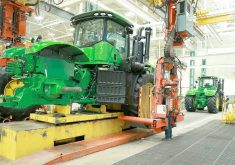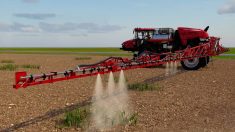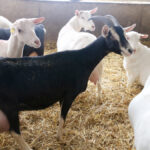At press time one could sense an increase in the anxiety level of crop producers. The reason being that spring has yet to arrive anywhere in the province. It’s of particular concern in southern Alberta, the home of many speciality crops that need to be seeded early into a warming soil. Growers of sugar beets, potatoes, beans, corn and a host of vegetables are getting worried, not just with the late spring but the possibility of late frosts in May. The other side of the coin is that with a later start it will take an exceptional summer to avoid a late harvest and the spectre of early-September frosts.
Read Also

Guarding against misinformation: Do you believe in house hippos?
Misinformation and disinformation run rampant in today’s digital age. Farmers must be wary of the digital dangers and know how to keep themselves safe.
One can cite this as just a risk of cold-climate farming, but this has not been the trend in the last few years. One of the interesting benefits of global warming, at least for crops in this part of the country, has been earlier springs. Even an advancement of a week is critical as it allows for better and more timely land preparation for seeding. That helps the overall agronomics of any cropping plan and has a significant impact on better yields at harvest. This has worked particularly well for crops under irrigation where better technology has optimized the critical timing of water application to maximum effect.
To add to the late spring woes, there has been small but steady snow and rainfall in most areas. Moisture is always welcome, but in the springtime it can add many days of seeding delay due to wet fields. Over the years at least with some crops, wet fields are becoming of increasing concern simply because of the immense size of machinery. Depending on the situation, big rigs can cause significant rutting or soil compaction on wet soils.
One could anticipate that considering these weather and moisture delays that significant seeding of many crops could be delayed well into late May. That’s no big deal in central and northern parts of the province where growers are used to seeding in late May and even early June, but it’s a very bad start for the south where most of the specialized crop production is located. On the other hand a wet spring is usually good news for pasture and hay crops, which makes livestock producers happy campers.
There is good news for irrigation farming. The snowpack in the mountains seems to be average, and if there is a regular run-off, reservoirs will be full for most of the year. An ace in the hole for the industry has been the technology leaps that have seen water application efficiency increase by up to 20 per cent. Add into that canal replacement with pipelines, and water shortages are becoming less of a threat even if the snowpack is down. It’s one of those little-publicized environmental success stories that the public doesn’t hear much about. It has a downside in that progress is used against the industry by green lobby groups as an indication that major irrigation infrastructure does not need to be further developed and expanded, but I digress.
There is also anxiety brewing in the livestock industry. The cattle feedlot and beef-packing industries have seen significant per-head losses for some time now, with some lots empty due to financial distress. With losses of around $100 per head only the well financed will survive. Luckily we have sophisticated operators well versed with risk management techniques to survive this round.
One does fear for cow-calf operators who will surely end up paying for a good chunk of those losses come this fall. The only thing that may save them from that marketing correction is that the cow herd continues to decline and affects the feeder calf supply. But if there are fewer feedlot buyers and continued border restrictions that may not help them either.
One of the causes of feedlot financial distress has been the high price of feed grains over the past year. There was hope for this year, as there were indications that corn seeding would increase significantly in the U.S. Midwest. More corn would put pressure on feed grain prices in Alberta as operators have shown no hesitation in bringing trainloads of corn into Alberta when the price is right. But lower feed grain prices might be an illusion being the late spring is also occurring in the U.S. upper Midwest where new corn acreage was being planned.
To add to cattle industry anxiety has been the unfolding news from trade discussions and border issues. The USDA seems to have become quite belligerent in refusing to adequately address the WTO decision on COOL. That may be a negotiating ploy but it will invariably delay any resolution many months even a year down the road. This issue is absolutely critical to the beef industry being most of our exports still go to the U.S. On the EU free trade issue, deadlock seems to have set in and beef exports are one of the hurdles to signing an agreement. The EU has made origin of Canadian cattle an issue for beef exports. That seems a bit of a red herring. My view is that the EU has no intention of giving Canada any more beef access to their markets than the U.S. However, the EU trade agreement is not as big a concern as U.S. intransigence on COOL.
So there you have it — almost universal anxiety for the ag industry in Alberta this spring. But then a good summer, timely rains and late frosts could change the crop and livestock situation to everyone’s benefit. I guess that’s the annual hope of agriculture in this province. Good luck to all.














